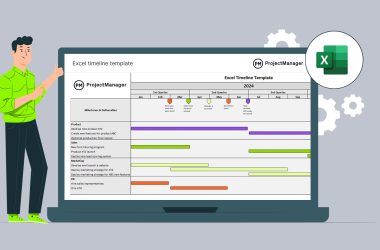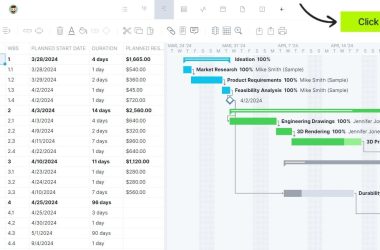Creativity is the cornerstone of innovation. It turns your work from average to outstanding, fixes problems, anticipates risks, and delivers better products and services, supporting the creation of superior solutions for customers and businesses.
And it makes work more fun.
So how can you put more creativity into your work day? Here are 5 quick hacks to supercharge your team’s creativity.

Let’s face it, sometimes you just don’t feel that creative.
And yet you need to continue to think creatively and tap into diverse ideas to get better results — you know the drill.
Getting innovative solutions often means empowering your team to be more creative. And that starts with the team feeling appreciated and that their ideas will be taken seriously.
If employees think their ideas will be laughed at, you won’t get any creativity from them. They have to have a place where they feel comfortable talking about slightly off-the-wall things where they know their suggestions will be accepted without fear of judgment.
So how exactly do you create that kind of safe space as part of your company culture? Here are 7 hacks to quickly boost creative thinking in teams.
1. Hack your brainstorming sessions
Brainstorming should be a creative activity, but it doesn’t always turn out like that. The problems start if you don’t go into a brainstorming session with the objective of being deliberately intentional about innovative thinking.
This approach ensures everyone feels comfortable and creative ideas can flow freely.
Don’t simply launch into handing out the sticky notes. Instead, start with some team exercises to warm up people’s brains and help them realize that they are in a safe space where it’s OK to make suggestions.
For example, start with a game like word association. It’s simple, takes no tools and starts the session off helping people feel that they aren’t going to be judged for what they say.
Focus on building psychological safety so you’re making a conducive environment for all the creative outputs!
To hack your brainstorming sessions:
Use warm-up exercises: Start with a quick game like word association to get everyone’s brains in gear and create a judgment-free zone.
Quantity over quality: Emphasize generating as many ideas as possible, no matter how wild. Later, sift through them for the gems.
Begin the brainstorming session when you are ready. Define the problem clearly. Give people clear instructions.
And then make it clear that they are there to generate lots of ideas. Some of them will probably be terrible, but they could spark some genuinely good ones, so there’s no judgement.
Later you can sift through the ideas and categorize them. You’ll probably find some that might fly. Then the team can look at those in more detail and come up with suggestions for the way forward.
Remember the golden rule of brainstorming: don’t judge ideas. Write everything up. Don’t be critical. You want to encourage ideas to flow, and telling someone that their idea won’t work simply shuts down the conversation.
You never know, a wacky idea might spark something in another colleague’s mind, and you do get a result you can run with.
2. Mentorship magic: Unlock individual creativity
Sometimes it isn’t appropriate to be creative as a team. Instead, you can work with individuals and help them unlock their own creativity.
Get to know your colleagues. It’s much easier to inspire and lead once you have a better understanding of what they are passionate about and what they love about their job.
Talk to them as a friend, a mentor, a coach. As a manager, you’re in a good place to support their goals, even if they don’t directly report to you. Even in a matrix structure there is quite a lot of latitude to support and develop individuals.
Generally speaking, people who enjoy coming to work and feel supported by their team and management will be more creative.
To hack individual creativity:
Get to know your colleagues and support their individual creative goals. Talk to them as a friend, mentor, and coach.
3. Hack team dynamics with quality relationships
Scientists at MIT’s Human Dynamics Laboratory discovered that the best predictors of a team’s success are the energy and level of engagement between team members outside of formal meetings.
Another Gallup study found that quality relationships at work are a predictor of a healthy, productive workplace.
Both of those studies have conclusions which will likely improve the creativity of your team.
To hack your team dynamics:
Use small, frequent interactions like casual chats, coffee breaks, and Slack/Teams messages to build trust and energy among team members.
So how do you put that into practice? Think about how you can improve the workplace, create a work/life balance and support colleagues in their professional goals.
And build in lots of informal communication. Call people. Chat on your Slack channel. Stop by their desk. Have coffee. Say thanks for their excellent idea.
These small hacks can significantly boost the willingness of team members to tap into their creative powers.
[lasso ref=”team-engagement” id=”20700″ link_id=”268189″]4. Diversity boost: Gather diverse voices
Your team might be the best at what they do, but teams sometimes end up with ‘inside the box’ thinking. That’s when it’s time to bring in some other voices.
Invite other colleagues to your team meetings. Share your problems at lunch-and-learn sessions. Encourage cross-functional working. Get the interns to mentor the big bosses.
The more diversity of thought you can bring to the workplace, the more likely it is you’ll create a culture where inclusivity and creativity comes easily.
To hack out of the box thinking:
Bring in colleagues from other departments, hold lunch-and-learn sessions, and encourage cross-functional working.
5. Celebrate small wins
It’s easier to be creative when you see that you are winning.
Look for and celebrate the small wins in the team. Circulate nice emails of praise from management or customers. Say thank you when someone comes up with a fresh idea.
Check out these ways to celebrate success, many of which don’t need any formal budget.
Harvard Business School professor Teresa Amabile argues in her book The Progress Principle: Using Small Wins to Ignite Joy, Engagement, and Creativity at Work (co-authored with Steven Kramer) that a sense of progress at work makes for more creative team members.
As Amabile points out:
“On the days when people are feeling happiest, proudest, and most motivated, the single most prominent event in those days is making progress in meaningful work.”
To hack winning:
Make everything a win! (OK, not everything.) Regularly recognize and celebrate small achievements to maintain a sense of progress and motivation.
6. Let people work autonomously
Creativity doesn’t come with a map. When you try to constrain your team’s behavior, you end up dictating how they are supposed to act. That’s stifling for your culture of innovation.
Let them make the decisions and use their own creative steam to power themselves forward.
In his book Drive: The Surprising Truth About What Really Motivates Us, Daniel Pink talks about a study conducted at Cornell University. It shows that businesses that gave employees autonomy grew four times faster than businesses that used command and control management. They also experienced significantly lower turnover rates and higher levels of discretionary effort from their team members.
Pretty cool.
To encourage autonomy:
Let your team make decisions and take ownership of their projects. This freedom fuels creative thinking.
7. Reward creativity
Finally, think of ways to reward people who have worked creatively.
That doesn’t always mean something large and showy: perhaps they thought outside the box and did something different and it worked. That’s enough. That’s still creativity.
To hack rewards:
Reward creativity on the spot, but also schedule it for larger moments. Celebrate their achievements with the team. Let everyone know that good ideas are worth sharing and that you notice.
However, a pat on the back for a creative idea isn’t going to foster creativity in your team longer term. And
The real reward (as well as you’re internal company recognition scheme, certificates and fun awards for individuals) should be the natural outcome of what we talked about a the beginning of this article — an environment where creativity is expected, supported and encouraged to flourish.
Squash the barriers to creativity
I hear that lack of time is often a reason why managers and team leaders struggle to boost team creativity, but it shouldn’t be something that takes a lot of time.
If you do have the time, you can give employees time to work on creative projects. Especially if they have come up with the ideas in the first place.
Another barrier is the perceived need to have training sessions, or to have your, or additional space for team members to work in a room with bean bags or similar.
Listen to constructive feedback, let creativity be a collaborative process and focus on building a positive working environment so people can be themselves.
When the setting is right, trust is established and people are encouraged to contribute, creativity will flourish.
A different version of this article first appeared on this blog in 2014.
This article first appeared at Rebel’s Guide to Project Management






